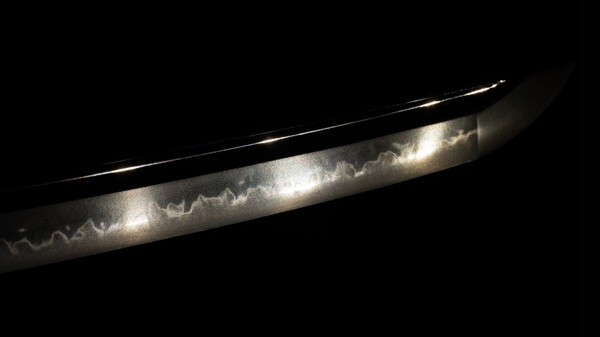-
Posts
418 -
Joined
-
Last visited
-
Days Won
4
Brano last won the day on April 8
Brano had the most liked content!
About Brano

- Birthday 03/19/1971
Contact Methods
-
Website URL
https://www.zonerama.com/Nihonto/887667
Profile Information
-
Gender
Male
-
Location:
Slovakia
-
Interests
Learn something new
Profile Fields
-
Name
Brano
Brano's Achievements
-
As Jussi said, blades that meet your expectations are very rare A healthy blade with a nagasa over 80cm pre Muromachi should easily pass Juyo if it is really healthy Therefore you will have to adjust one of your requirements - parameters or price In the entire history of Shinsa only about 150 Juyo blades fit your expectations And of those, I'm guessing maybe half won't have the sori you expect. Regarding the Nipponto seller - here I would be especially careful and without checking the blade in the hands of someone I trust I would not buy anything
-
This was valid for some time during Covid I think You can apply again for Hozon and Tokubetsu Hozon in one application https://www.touken.or.jp/shinsa/fee.html BTW - Shinsa has again significantly raised fees for Juyo and TokuJu
-
If you really want blades in this price range then don't do stupid things How do you know this blade is healthy? It's not easy to tell from the photo, but especially the Ura side comes to me without reflection, which means the hamon is almost dead in the monouchi I repeat - don't rush And if it helps you - it wasn't that long ago that I reacted the same way you did
-
The seller is trustworthy However, I think this blade has been sold for a long time ago - it's just that the website is not updated
-
Jedediah - it's your money and your decision of course. A friend who is also a member of this forum and an avid collector Bizen Den searched for a blade from this smith for several years before he got one that was worth it Study Saburo Kunimune thoroughly and learn what you don't want on a blade from him Spending money is the easiest thing in the world - the market offers thousands of ways to do it. However, when it comes time to sell, you will have a very hard time selling such a blade to collectors because: 1. the number of people who can spend that amount on a blade is limited 2. these people usually know and understand what they are looking for This is just friendly advice Don't rush
-
The worst thing you can do is buy a blade from a famous swordsmith just because it is from a famous swordsmith and the price seems low If you can spare that amount for a purchase, rather invest 20% of that price and make repeated trips to Japan and study really good blades in museums and at dealers
-
Of course - but I didn't say anything in the context of nie/nioi for jifu, did I? My comment was directed at how jifu utsuri manifests itself on blades - exactly as you write like a fingerprint. And the reason why it is so is perhaps small variations in the carbon concentration in the steel that cause such an effect. But that's just a guess I also agree that utsuri hardens the surface of the blade, but I'm not sure if that was the swordsmith's intention First of all - utsuri occurs only in a very thin layer of steel and with repeated sharpening it disappears much faster than hamon And then - I'm saying this as I heard, from a friend who has been a togishi for over 30 years A well-forged blade will crack/break in battle due to the higher harmonic frequencies that are created in the steel when blade repeatedly hits blade against blade To eliminate this phenomenon, the fumbari at the base of the blade is of fundamental importance
-
The third is a blade from the end of Kamakura, Bitchu/Bingo area Setsumei describes it as shirake utsuri Although the utsuri on this blade is not that pronounced, it is very sensitive to changes in the angle of light and the reflection looks like a hologram It is my favorite blade by the way
-
The second is a blade from the Rai school also from the Nanbokucho period. Setsumei describes utsuri as jifu utsuri but I would rather call it nie -utsuri
-
I have never statistically evaluated the presence of utsuri for higher rated blades in a time and school I agree with you that the prerequisite for the emergence of utsuri is first-class tamahagane. We can only assume that the typical appearance of Jifu utsuri is a consequence of fluctuations in the homogeneity of the raw material with respect to carbon content I am not a metallurgist and am not competent to make any conclusion However, I can attach examples of three different blades. All have nioiguchi in the ko-nie. The first is the Soden-Bizen school from the Nanbokucho period Prominent midare utsuri
-
First of all, I think that swordsmiths in the Early Koto period did not create utsuri intentionally. They primarily made weapons. The utsuri was just a side effect of the material's sensitivity to the yakiire process There are many great Kamakura blades from the Bizen school that do not have utsuri I'm not even sure if they were able to get the blade surface to a state where they could see the utsuri. Nice to see you back here @Rayhan
-
Offer for 1.200 EUR + postage
-
Offer for 3.900 EUR + postage + PP fee
-

Nihonto Substack: The Falling Leaf Sadamune
Brano replied to Hoshi's topic in General Nihonto Related Discussion
Tametsugu has zaimei Tanto (Juyo 31) Also JuBi Ko-wakizashi zaimei -
I also don't quite understand what you expect from finding out the weight of a few blades However, buy the book Swords of Kyoto, where you will find complete dimensions including weight of many great blades https://www.ebay.com/itm/404119882452?norover=1&mkevt=1&mkrid=711-167022-139639-2&mkcid=2&itemid=404119882452&targetid=296633477513&device=c&mktype=pla&googleloc=9062582&poi=&campaignid=20797276991&mkgroupid=155163401279&rlsatarget=pla-296633477513&abcId=&merchantid=5492131537&gad_source=1&gclid=CjwKCAjwnPS-BhBxEiwAZjMF0nsaf7pqg7QjuzUek3dyrW6UumJAI0ue5VfIP5Pktf4NpyJ4qbgabhoCio0QAvD_BwE

.thumb.jpeg.3d3dbecade81bb53985ff586033f4b31.jpeg)





.thumb.jpg.12f3ae07783fa0f0a7a6ce0f0334ab41.jpg)
.thumb.jpg.d01048378e2dee96a5c36bcfc6d70a7b.jpg)









